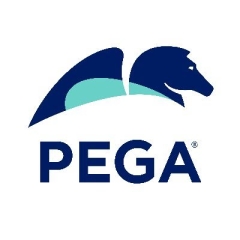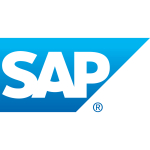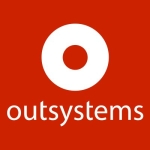What is our primary use case?
The solution is basically a quoting application. When insurance brokers or internal users have to call or do insurance quotes for commercial insurance, we use Pega. The insurance we cover is for outdoor coverage and for a casualty to property, as well as casualty insurance.
What is most valuable?
The solution's case management is its most valuable aspect.
It's basically an open architecture based software, which means the main aim of the software is to provide a low-code application development environment. It has several authoring tools on the UI flow and makes sure that you can put in a lot of gadgets and create the screen very quickly using those gadgets.
Right now, it has a pretty good feature set. It has case management and BPM workflow as well as robotic automation. It has decisioning. It has chat and virtual assistant support, and we just implement it on the cloud, therefore it's a pretty robust feature set.
What needs improvement?
They use something called a unique model-based architecture. During development, where the database and the UI, everything comes from one single piece of architecture. Due to that sometimes the enterprise architecture teams do not like it due to the fact that it forces them to use just one piece of architecture. If these could be more modularized, then it can be easily deployable in different kinds of scenarios in organizations, it would be much better.
However, they are kind of tightly coupled and it's difficult to separate everything out. Still, I would say it is an improvement to consider for the future. Id they could decouple the various components so that it gives flexibility to enterprise architects to deploy what is most needed as part of their enterprise architecture strategy, rather than getting kind of, looking at the only way the product handles, it would be a stronger product.
They are currently spending some time on improving the product with respect to machine learning, especially related to robotic automation. They probably could be a little more adept on that area would help.
It's very difficult to change many things unless somebody puts in the time to figure everything out. However, Pega could learn from all the customer service calls they get and categorize them in order to do an automatic form-based or customer service based response. If they could set it up to everything automatically, then that would save a lot of time and headaches for companies and help them troubleshoot and work through issues faster.
For how long have I used the solution?
We've been using the solution for almost ten years. We haven't used in the last 12 months too much, however.
What do I think about the stability of the solution?
We have found a few issues on the solution and we work closely with technical support to help fix them. While it is largely stable, we do find we need to keep up with problems and work closely with Pega directly to address and fix them when they arise.
What do I think about the scalability of the solution?
In terms of scalability, provided you throw hardware at it and you do a proper production implementation approach and alignment strategy, it's scalable.
You can go up to 2000 to 3000 users pretty easily. It's just that you need to throw a lot of hardware at it and make sure that you manage and create the web servers required. You need to create various pieces such as database servers and things like that, to make sure that you get the performance you need for those 2000, 3000 users.
The solution is being used continuously. I'm not sure about the increase in the usage, but at least it's serving the purpose as needed for the brokers.
How are customer service and technical support?
It's a complex piece of software. For that reason, we did find some issues and I was kind of instrumental in working with Pega on their global support model. We had weekly calls to review. They have a process to track issues that are unique. Sometimes it's handled by their support network, and sometimes the issue is taken up to be dealt with by working on the next version. For us, triage calls are made every week.
How was the initial setup?
The initial setup is never straightforward. It's always complex. Organizations deploying the solution will need a Pega admin and experts. It's not like anybody can just walk in and install it onto a PC. It needs a lot more performance concentrations and much more integration considerations. Therefore, it's a little complex.
In terms of deployment times, on-premise, it takes a little more time, and I would say it would take maybe about a month. However, now, cloud implementations are pretty quick and go much faster.
In terms of maintenance, we do need someone from the company to help us manage the solution.
What about the implementation team?
We did solicit outside assistance for the implementation. We actually used both the Pega professional services in the beginning for a short time and then a subsequent implementation was done by an integrator.
What's my experience with pricing, setup cost, and licensing?
There are multiple models. They have enterprise licenses for each server, for the product version. If you're doing it on-premise they also have per user basis on their cloud.
It depends on what your specific need is. Those vary from customer to customer, depending on the number of users and the volume of business and things like that. There's no, set price, or a specific quote and everybody just follows it. It's more they work out the enterprise licensing agreements or per user basis with respect to each client.
Which other solutions did I evaluate?
I joined the company when those decisions were already made. I wasn't part of that decision. However, in a lot of places where I've consulted as a digital transformation consultant, we did definitely compare Pega with competition such as Appian and other BPM, and even Salesforce and other workflow systems as well.
What other advice do I have?
We're just customers. We don't have a business relationship with Pega.
Pega BPM is definitely one of the topmost BPM packages out there. It hits all the right notes for a containerized implementation. The only thing you need to be careful is that you definitely need experts to help you along the way, in both the design and the requirements capture. They have an excellent requirements capture tool as well. However, if somebody needs to be trained on that, you need the help of experts, both on the software architecture as well as business architecture as well as the Pega admin. Eventually, these kinds of positions will either require a company to staff up or they will need to work with a system integrator.
Most of the companies work with system integrators due to the fact that Pega professional services are definitely very expensive. Organizations will work with a company life Cognizant or Accenture or others to really help them out along the way.
I'd rate the solution nine out of ten.
Which deployment model are you using for this solution?
On-premises
Disclosure: My company does not have a business relationship with this vendor other than being a customer.




















